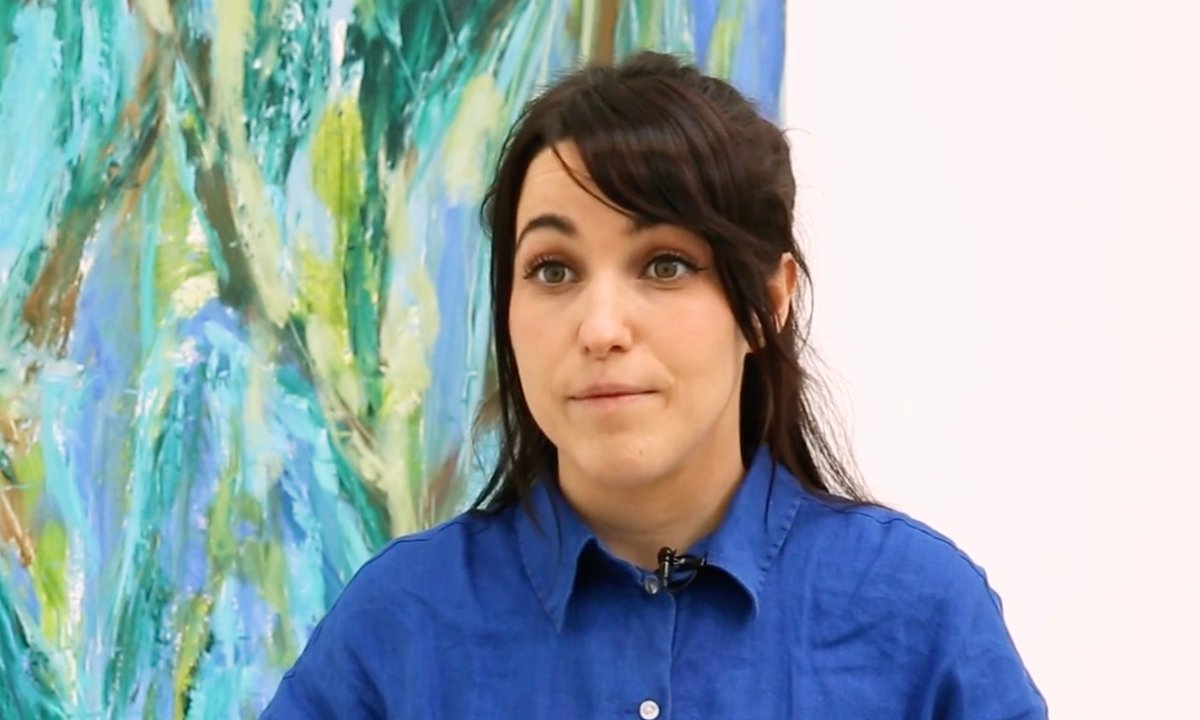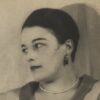
The body of a woman, believed to be that of the missing artist Sarah Cunningham, has been found in London.
Cunningham, an award-winning painter who had recently wrapped Flight Paths, a solo show at Lisson Gallery in Los Angeles, disappeared after a night out last Friday and was quickly flagged as missing. Despite a number of reported sightings—including one of her allegedly getting into a car in London’s Camden neighbourhood—police were unable to locate her.
Prior to the discovery of the body of a woman who was wearing clothes that matched the description of the missing 31-year-old, family members, friends and fellow artists took to social media to describe Cunningham, who graduated with a Masters from the Royal College of Art (RCA) in 2022 and who held her first solo exhibition, The Crystal Forest, at Lisson Gallery in London last year, as a “beloved” friend who was last seen wearing a black dress with Converse sneakers.
On Monday (4 November) police released a statement to The Art Newspaper confirming a body had been retrieved from railway tracks beside the Chalk Farm station. No further comment was available pending formal identification. Cunningham’s family had been informed of the latest development, police said. Police are currently treating the death as unexpected, but at present it is not thought to be suspicious.
At the time of her disappearance she had exhibited in Aspen, Berlin, London, Los Angeles and Canada. She also had a longstanding relationship with the Bomb Factory Art Foundation in London and had been represented by Lisson since July 2023. A spokesperson for Lisson declined to comment. On Sunday the gallery posted a message on Instagram about Cunningham’s disappearance and urging anyone with information about her whereabouts to contact the police.
Her distinctive, abstract style, with fleeting figurative imagery, was recognisable by exaggerated brushwork often made with an extended brush fashioned from scraps of wood by Cunningham. She frequently painted through the night, a habit formed when she held down jobs at two galleries—including the Nottingham Contemporary—as well as a delivery driver, often working a late or early-hours shift.
She eschewed the use of preparatory sketches “or any sense of a formal roadmap’ and recently told the interviewer Lee Gordon that she often started a painting “by working on the floor with rags and brushes”. She added: “I treat the surface of the painting as a palette, the paint is pushed and pulled.”
Her monumental triptych landscape I will look into the earth (2023) attests to the mature talent that previously won her the Djanogly Art Award and the Ali H. Alkazzi Scholarship Award, both in 2019. She credited the latter with allowing her to survive the exorbitant costs of living and studying art in London, where she often took the all-night public transport—captured in her 2023 painting Night Bus Home.
In the catalogue that accompanied her first solo show, Cunningham is described as a painter who “seeks out the essential and the alive through her imaginary wildernesses and fluid forestscapes. […] Part abstract experimentation, part spiritual journey, every painting at some level represents the intuitive and unspoken connection between nature and humankind.”
Originally from the Wollaton area of Nottingham, a city in the centre of England, Cunningham had created a significant body of work since leaving the RCA. Her practice developed from her fascination with the natural world, both the urban jungle and especially the jungles of Central America.
Her canvas Crystal Forest (2023) was the product of a 2018 residency in Panama organised by La Wayaka Current. That experience had a profound influence on her work, and she discussed the impact of her interactions with the Indigenous Kuna people in a talk she gave in her native city on her return.
Alongside her embrace of the environment, Cunningham also operated on a much more granular level, recalling with Gordon how when she had been asked to make a commission for someone who was terminally ill, she “learned how a painting can provide or offer a sense of refuge or comfort”.
Ahead of her recent show with Lisson in Los Angeles, Cunningham told the gallery: “I imagine myself in flight when I am painting, scanning over the surface, searching for places to deep dive, touch down or lift off. The paintings are journeys between the space of my body and the space of the outside.”








